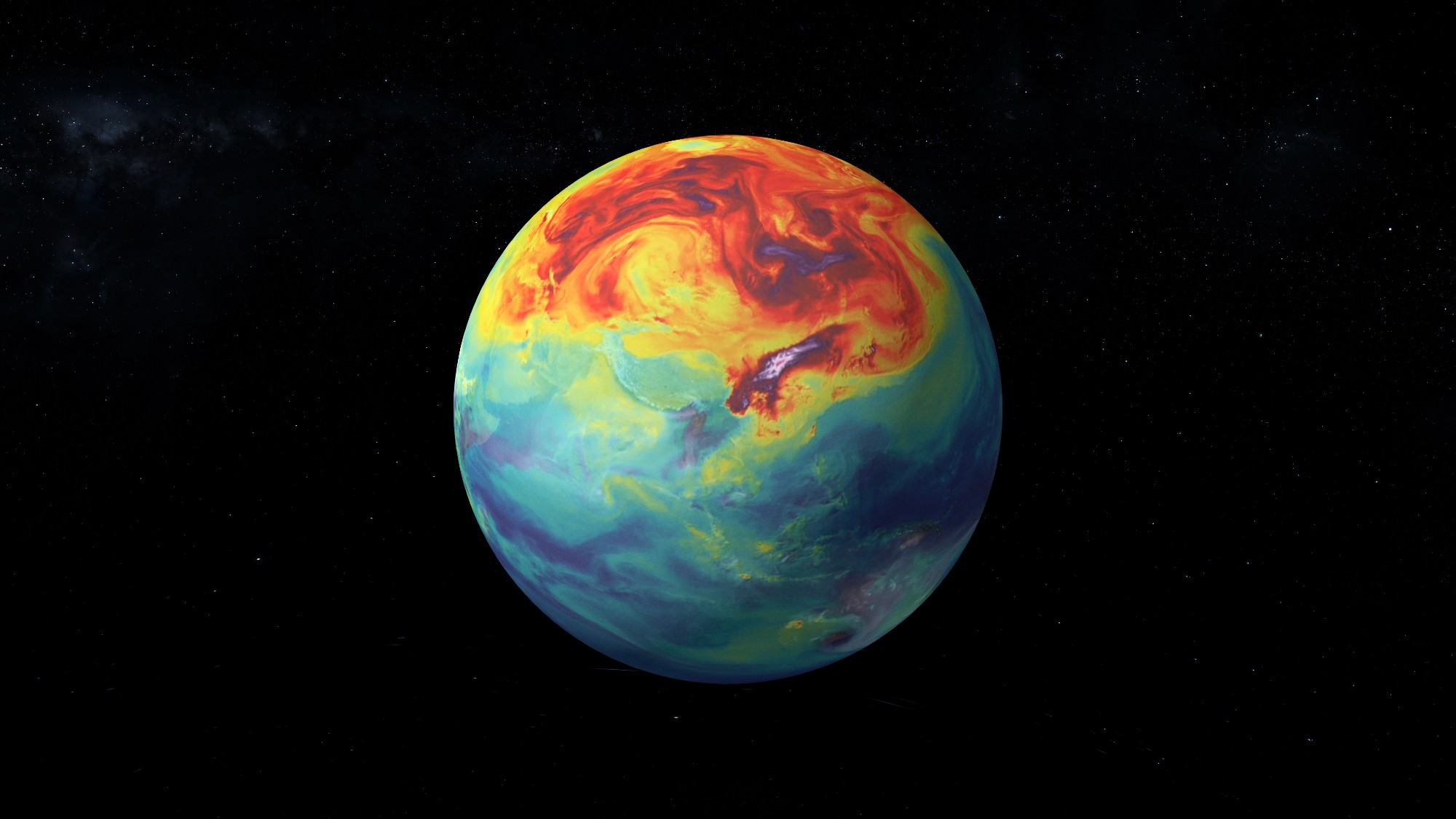What to expect during the potential 'super' El Niño
El Niño is back this year and with a vengeance


The weather phenomenon La Niña ended in March after a three-year run, giving way to its sister phenomenon, El Niño. Now, there are signs indicating that this year's El Niño will be far more extreme than usual. Oceans have been warming at a "rapid" rate leaving scientists concerned about what El Niño will bring. It could even be enough to push average global temperatures above the 1.5-degree-Celsius threshold detailed by the United Nations.
What is El Niño?
The El Niño Southern Oscillation (ENSO) is a weather phenomenon in which "sea temperatures at the surface in the central and eastern tropical Pacific Ocean become substantially warmer than normal," according to the World Meteorological Organization. This results in "extreme heat, dangerous tropical cyclones and a significant threat to fragile coral reefs," as well as overall warmer temperatures, according to CNN. The phenomenon typically lasts between nine and 12 months.
In early June, the U.S. National Oceanic and Atmospheric Administration (NOAA) confirmed that El Niño's 2023 iteration had officially arrived. "For the next few months, during the northern summer, El Niño will most be felt in the Southern Hemisphere with 'minimal impacts' in North America," NOAA climate scientist Michelle L'Heureux told Time. The phenomenon tends to affect the Southern Hemisphere more strongly.
The Week
Escape your echo chamber. Get the facts behind the news, plus analysis from multiple perspectives.

Sign up for The Week's Free Newsletters
From our morning news briefing to a weekly Good News Newsletter, get the best of The Week delivered directly to your inbox.
From our morning news briefing to a weekly Good News Newsletter, get the best of The Week delivered directly to your inbox.
However, scientists are warning this year of a potential "super El Niño," which could cause "very high temperatures in a central region of the Pacific around the equator," reported The Guardian.
What does El Niño entail?
While the predicted strength of a coming El Niño varies across climate models, the "really big ones reverberate all over the planet with extreme droughts, floods, heatwaves and storms," Mike McPhaden, a senior research scientist at NOAA, told The Guardian.
An El Niño could also cause global temperatures to cross the crucial 1.5-degree-Celsius warming threshold outlined by the United Nations. "We will probably have, in 2024, the warmest year globally on record," Josef Ludescher, a senior scientist at Potsdam Institute for Climate Impact Research, told CNN. The current record holder is 2016, which also had a strong El Niño.
Jon Gottschalck, a head forecaster at NOAA's Climate Prediction Center, also said that the phenomenon could "elevate odds for atmospheric river-type events for the West Coast," which were responsible for much of the unprecedented levels of precipitation in California, for instance.
A free daily email with the biggest news stories of the day – and the best features from TheWeek.com
What about the ocean?
Scientists are extremely concerned about how quickly the ocean is warming. Warmer ocean temperatures could wreak havoc on coral reefs and intensify hurricane season in the Pacific. "What's being predicted here is very scary," Peter Houk, a professor at the University of Guam, told CNN. "Every time [an El Niño] comes, it grows a little bit more in intensity."
Another consequence is the disappearance of the ocean's "twilight zone," which is "located between 656 feet and 3,280 feet (200 meters to 1,000 meters) below the surface," per CNN. The region, which represents a quarter of the ocean, contains a high level of biodiversity. Historically, "in these warm periods, far fewer organisms lived in the twilight zone, because much less food arrived from surface waters," said Paul Pearson, an honorary professor at Cardiff University.
"La Niña's temporary grip on rising global temperatures has been released," NOAA's McPhaden told the AP. "One result is that March 2023 was the second-highest March on record for global mean surface temperatures." He added: "What we are seeing now is just a prelude to more records that are in the pipeline."
Is climate change playing a role?
Scientists believe that climate change is causing El Niño to come more frequently and more intensely than before, despite being a natural phenomenon. According to a 2019 study, "if the currently observed background changes continue under future anthropogenic forcing, more frequent strong El Niño events are anticipated." In addition, "if this El Nino tips into the largest class of events … it will be the shortest recurrence time in the historical record," Kim Cobb, a climate scientist at Brown University, told Time.
The outcomes of ENSO events are also more intense against the backdrop of climate change because the warmth of the ocean and atmosphere are exacerbated. "Extreme El Niño and La Niña events may increase in frequency from about one every 20 years to one every 10 years by the end of the 21st century under aggressive greenhouse gas emission scenarios," said McPhaden. "The strongest events may also become even stronger than they are today."
Updated June 20, 2023: This article has been updated throughout.
Devika Rao has worked as a staff writer at The Week since 2022, covering science, the environment, climate and business. She previously worked as a policy associate for a nonprofit organization advocating for environmental action from a business perspective.
-
 Political cartoons for November 23
Political cartoons for November 23Cartoons Sunday’s political cartoons include a Thanksgiving horn of plenty, the naughty list, and more
-
 How will climate change affect the UK?
How will climate change affect the UK?The Explainer Met Office projections show the UK getting substantially warmer and wetter – with more extreme weather events
-
 Crossword: November 23, 2025
Crossword: November 23, 2025The daily crossword from The Week
-
 Why scientists are attempting nuclear fusion
Why scientists are attempting nuclear fusionThe Explainer Harnessing the reaction that powers the stars could offer a potentially unlimited source of carbon-free energy, and the race is hotting up
-
 Canyons under the Antarctic have deep impacts
Canyons under the Antarctic have deep impactsUnder the radar Submarine canyons could be affecting the climate more than previously thought
-
 NASA is moving away from tracking climate change
NASA is moving away from tracking climate changeThe Explainer Climate missions could be going dark
-
 What would happen to Earth if humans went extinct?
What would happen to Earth if humans went extinct?The Explainer Human extinction could potentially give rise to new species and climates
-
 Bacteria can turn plastic waste into a painkiller
Bacteria can turn plastic waste into a painkillerUnder the radar The process could be a solution to plastic pollution
-
 A zombie volcano is coming back to life, but there is no need to worry just yet
A zombie volcano is coming back to life, but there is no need to worry just yetUnder the radar Uturuncu's seismic activity is the result of a hydrothermal system
-
 'Bioelectric bacteria on steroids' could aid in pollutant cleanup and energy renewal
'Bioelectric bacteria on steroids' could aid in pollutant cleanup and energy renewalUnder the radar The new species is sparking hope for environmental efforts
-
 Earth's oceans were once green and could one day turn purple
Earth's oceans were once green and could one day turn purpleUnder the radar The current blue may be temporary
